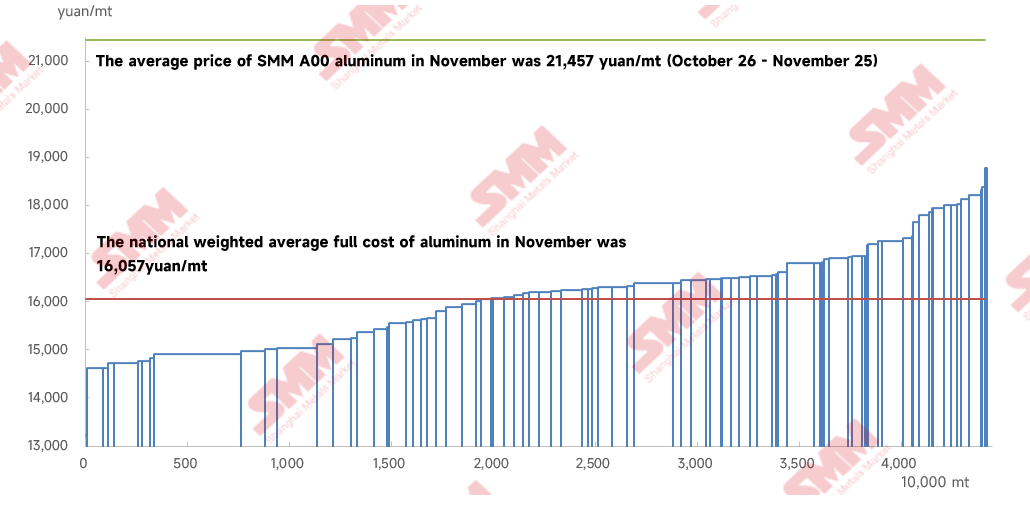Senate’s turn to pass the Fix Our Forests Act – Competitive Enterprise Institute

Legislative Initiative for Sustainable Forest Management: The Fix Our Forests Act (FOFA)
Introduction
A legislative proposal, H.R. 471, known as the Fix Our Forests Act (FOFA), has achieved significant bipartisan support in the U.S. House of Representatives, passing with a 279-141 vote. The bill is currently awaiting action in the Senate. The primary objective of FOFA is to reform national forest management practices to mitigate the risk of catastrophic wildfires, a goal that aligns directly with several United Nations Sustainable Development Goals (SDGs).
Aligning Forest Management with Sustainable Development Goals (SDGs)
SDG 15: Life on Land
The core of FOFA is directly linked to SDG 15, which calls for the protection, restoration, and sustainable use of terrestrial ecosystems and sustainably managed forests. Decades of inadequate management have contributed to an increase in the scale and destructiveness of wildfires, threatening biodiversity and ecosystem health. FOFA aims to implement policies that restore fire to its natural ecological role, thereby promoting healthier, more resilient forest ecosystems and protecting vital habitats.
SDG 13: Climate Action
Effective forest management is a critical strategy for climate action. Healthy forests serve as essential carbon sinks, while catastrophic wildfires release vast quantities of carbon dioxide into the atmosphere. By enabling proactive management techniques like prescribed burns and mechanical thinning, FOFA supports climate change mitigation efforts. Furthermore, enhancing forest resilience contributes to climate adaptation by reducing the vulnerability of ecosystems and communities to climate-related hazards like wildfires.
Key Provisions and Their Impact on Sustainability
Addressing Procedural Inefficiencies to Advance SDG 15
A central provision of FOFA is the proposed reversal of the 2015 9th Circuit Court decision, Cottonwood Environmental Law Center v. U.S. Forest Service. The implications of this legal precedent present significant obstacles to achieving sustainable forest management goals.
- Duplicative Requirements: The Cottonwood decision mandates that the Forest Service re-evaluates entire forest management plans whenever new information about a species listed under the Endangered Species Act becomes available. This is considered duplicative, as detailed environmental analyses are already conducted for every site-specific project.
- Resource Diversion and Delays: This re-evaluation process is both time-consuming and costly. Former Forest Service Chief Randy Moore estimated it would take over 10 years and tens of millions of dollars, diverting critical resources from on-the-ground conservation and management projects.
- Counterproductive Outcomes: The delays caused by these procedural requirements impede essential forest health projects. This inaction increases the risk of catastrophic wildfires, which ultimately destroy the very habitats and species the original ruling intended to protect, undermining the objectives of SDG 15.
FOFA also seeks to resolve a legal conflict between the 9th Circuit’s Cottonwood decision and a 2007 10th Circuit ruling, Forest Guardians v. Forsgren, which reached the opposite conclusion regarding the need for plan-level re-evaluation.
Promoting Collaboration and Innovation for SDG 17
In alignment with SDG 17 (Partnerships for the Goals), FOFA includes several provisions to enhance cooperation and effectiveness in forest management.
- Technological Advancement: The bill encourages the adoption of technological innovations in wildland firefighting and forest monitoring.
- Streamlined Processes: It expands existing categorical exclusions under the National Environmental Policy Act (NEPA) to expedite necessary forest health projects.
- Multi-Stakeholder Collaboration: FOFA actively promotes collaboration between federal, state, tribal, and local authorities, fostering the partnerships essential for integrated and sustainable land management.
Broader Implications for Community Resilience and Health
SDG 11: Sustainable Cities and Communities & SDG 3: Good Health and Well-being
The impacts of improved forest management extend beyond the forests themselves. By reducing the frequency and intensity of catastrophic wildfires, FOFA contributes to SDG 11 by making human settlements safer and more resilient to natural disasters. Protecting communities and infrastructure from fire is a key component of sustainable community planning. Additionally, mitigating large-scale wildfires directly supports SDG 3 by reducing the severe air pollution caused by smoke, which has well-documented negative impacts on public respiratory health.
Conclusion and Path Forward
The Fix Our Forests Act represents a comprehensive attempt to modernize U.S. forest policy in a manner consistent with global sustainability targets. By addressing legal inefficiencies and promoting proactive, collaborative management, the legislation seeks to enhance the health of national forests, thereby contributing to SDG 15 (Life on Land), SDG 13 (Climate Action), SDG 17 (Partnerships for the Goals), SDG 11 (Sustainable Cities and Communities), and SDG 3 (Good Health and Well-being). Following its passage in the House, the bill’s progression through the Senate will determine its potential to shift national strategy from reactive fire suppression to proactive, sustainable forest stewardship.
Analysis of Sustainable Development Goals in the Article
1. Which SDGs are addressed or connected to the issues highlighted in the article?
- SDG 15: Life on Land
- The article’s primary focus is on the sustainable management of forests, mitigating catastrophic wildfires, and protecting terrestrial ecosystems. It discusses the health of national forests, the impact of management policies on habitats, and the protection of endangered species, all of which are central to SDG 15.
- SDG 13: Climate Action
- The article addresses the mitigation of “catastrophic wildfires,” which are recognized as a significant climate-related natural disaster. By promoting better forest management to reduce the severity and frequency of these fires, the proposed legislation contributes to strengthening resilience and adaptive capacity to climate-related hazards.
- SDG 16: Peace, Justice and Strong Institutions
- The discussion revolves around legislation (the Fix Our Forests Act), legal conflicts between different circuit courts (Cottonwood vs. Forest Guardians), and the operational efficiency of a government institution (the U.S. Forest Service). The article highlights how a legal ruling has created an inefficient, costly, and counterproductive process, and how new legislation aims to create more effective and accountable institutional procedures.
- SDG 17: Partnerships for the Goals
- The article explicitly mentions that the Fix Our Forests Act “promotes federal, state, tribal and local collaboration.” This directly relates to the goal of fostering multi-stakeholder partnerships to achieve sustainable development objectives.
2. What specific targets under those SDGs can be identified based on the article’s content?
- Under SDG 15 (Life on Land):
- Target 15.2: “promote the implementation of sustainable management of all types of forests, halt deforestation, restore degraded forests and substantially increase afforestation and reforestation globally.” The article’s entire premise is about implementing better, more sustainable forest management practices (like prescribed burns and thinning) to restore national forests to “healthier states” and prevent their degradation by massive wildfires.
- Target 15.5: “Take urgent and significant action to reduce the degradation of natural habitats, halt the loss of biodiversity and, by 2020, protect and prevent the extinction of threatened species.” The article argues that the current legal framework under the Cottonwood decision inadvertently harms endangered species by delaying projects that improve habitat and increasing the risk of habitat destruction from wildfires. The proposed act aims to rectify this, thereby contributing to the protection of threatened species and their habitats.
- Under SDG 13 (Climate Action):
- Target 13.1: “Strengthen resilience and adaptive capacity to climate-related hazards and natural disasters in all countries.” The bill’s goal to mitigate “catastrophic wildfires” is a direct effort to strengthen resilience against a major climate-related hazard that plagues the western United States.
- Under SDG 16 (Peace, Justice and Strong Institutions):
- Target 16.6: “Develop effective, accountable and transparent institutions at all levels.” The article criticizes the current process mandated by the Cottonwood decision as duplicative, costly, and time-consuming, hindering the Forest Service’s effectiveness. The proposed legislation seeks to streamline these processes, making the institution more efficient and effective in its mandate.
- Target 16.7: “Ensure responsive, inclusive, participatory and representative decision-making at all levels.” The article’s mention that the bill “promotes federal, state, tribal and local collaboration” directly supports this target by encouraging a more inclusive and participatory approach to forest management.
3. Are there any indicators mentioned or implied in the article that can be used to measure progress towards the identified targets?
- Indicators for SDG 15 (Life on Land):
- Area of forest land degraded by catastrophic wildfires: The article states that wildfires are “larger and more destructive than in the past.” A reduction in the acreage destroyed annually would be a key indicator of successful management.
- Number of forest management projects implemented: The article notes that the Cottonwood decision “delays” essential projects like prescribed burns. An increase in the number and timeliness of these projects would indicate progress.
- Indicators for SDG 16 (Peace, Justice and Strong Institutions):
- Cost and time for forest plan consultations: The article explicitly quotes a Forest Service Chief stating the current re-consultation process would take “over 10 years and tens of millions of dollars.” A reduction in the time and financial resources required for these planning and review processes would be a direct measure of increased institutional efficiency.
- Number of collaborative agreements for forest management: Progress towards Target 16.7 could be measured by tracking the number of formal partnerships established between federal, state, tribal, and local entities as promoted by the act.
SDGs, Targets, and Indicators Table
| SDGs | Targets | Indicators (Implied or Mentioned in the Article) |
|---|---|---|
| SDG 15: Life on Land | 15.2: Promote sustainable management of all types of forests and restore degraded forests.
15.5: Reduce the degradation of natural habitats and halt the loss of biodiversity. |
– Annual area of forest land affected by catastrophic wildfires. – Number of forest health projects (e.g., prescribed burns, mechanical thinning) completed. – Status of habitats for endangered species within national forests. |
| SDG 13: Climate Action | 13.1: Strengthen resilience and adaptive capacity to climate-related hazards and natural disasters. | – Reduction in the frequency and intensity of destructive wildfires. |
| SDG 16: Peace, Justice and Strong Institutions | 16.6: Develop effective, accountable and transparent institutions.
16.7: Ensure responsive, inclusive, and participatory decision-making. |
– Reduction in the time required for forest plan re-consultation (from the stated “over 10 years”). – Reduction in the cost of forest plan re-consultation (from the stated “tens of millions of dollars”). – Number of collaborative management agreements between federal, state, tribal, and local entities. |
Source: cei.org
What is Your Reaction?
 Like
0
Like
0
 Dislike
0
Dislike
0
 Love
0
Love
0
 Funny
0
Funny
0
 Angry
0
Angry
0
 Sad
0
Sad
0
 Wow
0
Wow
0




















































.jpg.webp?itok=0ZsAnae9#)


























